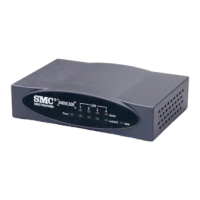5. From the TCP/IP Properties dialog box, click the [Obtain an IP address automatically] option.
6. Next click on the [Gateway] tab and verify the Gateway field is blank. If there are IP
addresses listed in the Gateway section, highlight each one and click [Remove] until the
section is empty.
7. Click the [OK] button to close the TCP/IP Properties window.
8. On the Network Properties Window, click the [OK] button to save these new changes.
NOTE: Windows may ask you for the original Windows installation disk or additional files.
Check for the files at c:\windows\options\cabs, or insert your Windows CD-ROM into your
CD-ROM drive and check the correct file location, for example, D:\win98, D:\win9x. (assume
“D” is your CD-ROM drive).
9. Windows may prompt you to restart the PC. If so, click the [Yes] button. If Windows does
not prompt you to restart your computer, do so anyways to ensure your settings.
4.2 | Configuring Windows 2000
1. Access your Network settings by clicking [Start], choose [Settings], and then select [Control
Panel]
2. In the Control Panel, locate and double-click the [Network and Dial-up Connections] icon
3. Locate and double-click the [Local Area Connection] icon for the Ethernet adapter that is
connected to the Barricade. When the Status dialog box window opens, click the [Properties]
button.
4. On the [Local Area Connection] Properties box, verify the box next to Internet Protocol
(TCP/IP) is checked. Then highlight the Internet Protocol (TCP/IP), and click the Properties
button.
5. Select Obtain an IP address automatically to configure your computer for DHCP. Click the
[OK] button to save this change and close the Properties window.
6. Click the [OK] button again to save these new changes.
7. Reboot your PC.

